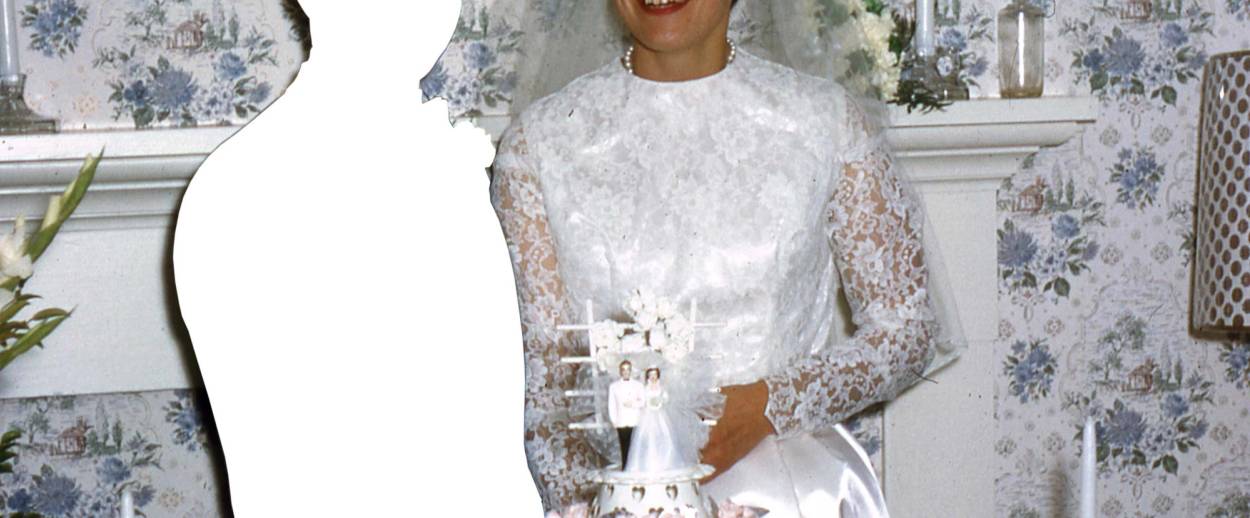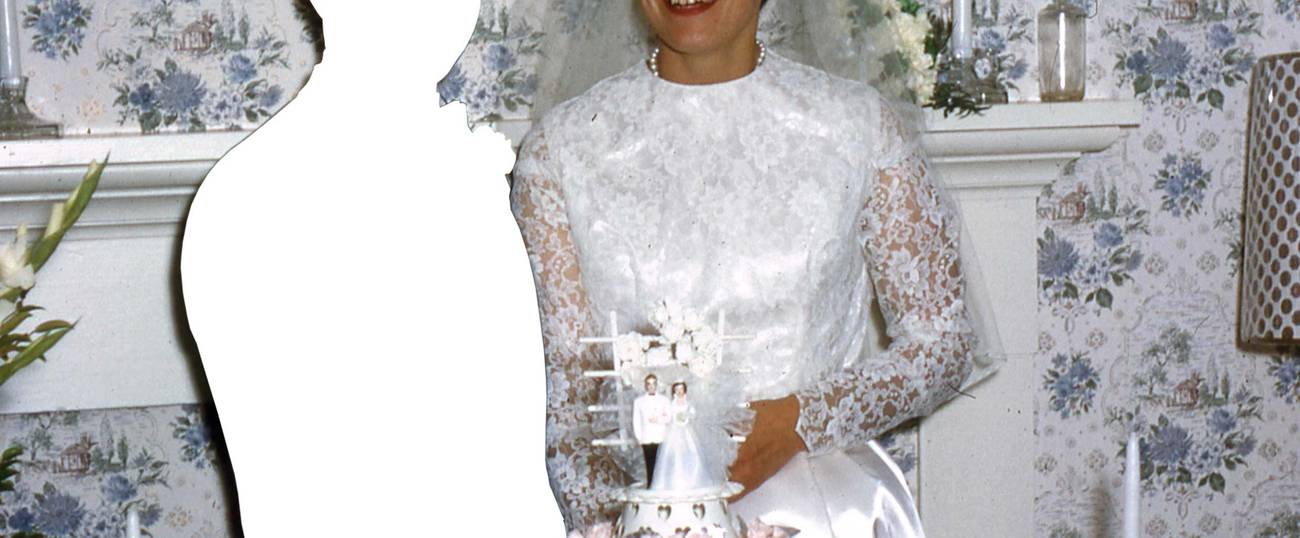My Two Divorces
Why getting a ‘get’ was more meaningful, and more important to me, than my civil divorce




Less than a year and a half ago, I married in the Jewish tradition, a large simcha in an Orthodox shul.
Seven months after our wedding, my husband told me that he wanted something different from his life. I couldn’t fathom a divorce from the man I loved, but I soon learned that I had no choice. And so it was that proceedings began for our divorce—or, rather, our two divorces: civil and religious.
The two experiences couldn’t have been more different.
When I went to the Beth Din, the Jewish court where my husband had applied for a get—a Jewish divorce—I met with the dayan in a room filled with ancient books. We must have been a strange sight: this Orthodox man with a white beard, dressed in black, and me, a non-Orthodox woman in black jeans and a sweater, my eyes red from crying, working my way through the tissue box. He was kind and soft-spoken as he explained that he’d met with my husband and tried to persuade him to attend mediation with me, to try not to be hasty, to stay with our marriage. This wasn’t a typical situation; after the hoops that must be jumped through in order to be married in the Orthodox tradition, most people who enter into marriage in this way don’t leave so soon after embarking on it. I was not yet ready to receive my get—I was still shell-shocked from my husband’s declaration that he wanted to end our marriage.
After that meeting, both the dayan and a female case worker reached out to me several times, checking in with me, offering support and guidance during a time when I was a bewildered witness to the events unfolding in my own life. I’ll never forget the warm hug I received from the caseworker, and how she reassured me that things would get better with time.
A month after that hug at the Beth Din, my first wedding anniversary came around. Instead of celebrating together, like most newlyweds, this date marked the official beginning of the civil divorce. (In England, where we live, you can’t apply for a civil divorce until you’ve been married a year.)
My meetings with my civil lawyer, Rhona, were focused on facts and numbers. Numbers are not my strong suit, and sitting across a boardroom table discussing legal matters was distressing; I found it hard to take in the specifics. I called on the pragmatic minds of my mother and brother, who helped me with the more practical issues of budgeting and where I would live.
My husband’s stance about wanting to end our marriage remained fixed. The dayan told me that he’d write a letter asking him to apologize to me; if he wouldn’t agree to mediation to try to save the marriage, the dayan said, at least he could apologize. He told me that it was rare for him to take this kind of action, and on Beth Din letterhead, no less, but the dayan could see my heartbreak: What was happening to my marriage didn’t feel right to him and he felt compelled to try to help.
Because he and the case worker extended themselves to try to preserve my marriage, I felt that my predicament was understood for what it was: a very personal tragedy, one that still might have been avoided if only my husband could be persuaded to slow down and to take some time to think things over.
In my meetings with the civil lawyer around the same time, I felt that I was merely a cog on a conveyor belt, filling out form A, form B, form C. The forms were gut-wrenching, reducing our marriage to a mess of numbers.
Emails came from the Beth Din, gentle and sensitively worded. Emails came from the lawyer, brisk and business-like.
Our civil divorce edged closer to finality, with form after form bringing me one step closer to becoming a divorcee. Our Jewish divorce edged closer to finality, not through form filling but through a very human touch: counsel from the Beth Din.
The get ritual, like my life 18 months after our marriage, was without my husband’s presence. He made it clear to the dayan that he was not going to attend. Because he’d signed the get in absentia, a typically longer ritual would be significantly shortened and words spoken to me during this ritual would be from a stranger, someone acting on my husband’s behalf.
My husband’s absence from the room felt both palpable and symbolic to me. My friend Sonia and my mother sat at the back of the room for moral support. As I sat in this intimate, sacred space, I thought of how my husband had been engaged to several other women, and how he had called each engagement off before making it to the chuppah. I thought of how I could have been spared all this if he’d called our wedding off, too.
In order to receive the get, my hands had to be unadorned so that there was nothing between the get and my skin. I took off my ring—I’d bought this one for myself when I’d stopped wearing my engagement ring and wedding band; its presence on my left hand reminded me of my own empowerment. My hands were bare, just as they had been the day of our marriage.
The dayan welcomed me and asked if I was feeling better in myself since the last time he’d seen me, if I was feeling stronger. Yes, and yes. “It’s terribly sad, this case,” he said. “I tried with your husband but there was nothing I could do.” I thanked him sincerely for trying.
With the civil divorce, in contrast, I was standing on my own in my living room, looking at a piece of paper with an X where I was supposed to sign my name. I was on my own with a pen, a stamp, and a mailbox to send in the signed paperwork. I signed one document on the day it arrived and mailed it off a few hours later. That night, I fainted. The emotional weight of what I had done had caught up with me. The gravitas of my signature had been difficult to process earlier that day, without counsel, without ritual, without wise words to guide me through, but my body knew. Even without a ceremony, my body knew.
The ritual of a Jewish divorce is containing. It can comfort and help. There is counsel, too—wise words from people who have tried to help. And, of course, there are witnesses. An important life transition is marked with gentleness and within a supportive community.
The endless impersonal paperwork of the civil divorce felt to me to be the very opposite of the symbolism and meaning attributed to the rite of passage associated with the get. The conveyer belt mechanism of the civil-divorce process and this age of quickie divorces seems to devalue the symbolism of the big white wedding, loaded with meaning and ritual. It certainly doesn’t feel like a fitting end to an institution as important as a marriage.
With ritual, we ascribe meaning to important moments. With the civil divorce, the gravitas of what you are doing can easily be lost. You go on with your day … until you faint.
There is a part in the get ceremony where the dayan spoke for my husband, in first person, saying he would “free Amy, son of Paul, from her commitments in marriage and pronounce her free to marry any man she chooses.” Hearing those words made my eyes sting with tears. I was grateful for the tissues.
The get document itself is beautiful, written in thick black pen, Aramaic calligraphy. The dayan folded the get into a small square, a swift little origami masterpiece, and then he showed me the right way to cup my hands. Every part of it needed to touch the palm of my hand.
I stood face to face with this geriatric man. Breathing heavily and hunched over, he was the exact opposite of my husband in age, in posture, in piousness. This was a big moment: The moment I said my own “yes,” accepting the get into my hands, I would be divorced.
In the civil divorce, my “yes” wasn’t something I ever had to vocalize in front of a room of witnesses. The “yes” of my civil divorce had been a more quiet kind of confirmation—my signature, over and over again, on paper.
My knees wobbly, I stood and looked in the eyes of the elderly man. “Yes,” I said, in a strong voice. This had not been an easy “yes” to come to. But the answer was yes, finally. Yes to bidding goodbye to the hopes and dreams I had of a life with my husband. Yes to no longer being married to a man who didn’t want to be married.
Yes to starting again. Yes.
The paper fit perfectly inside my cupped hands. I was told to feel its presence, and then when I was ready, to carry it under my arm and walk away from this man who wasn’t my husband any longer. I put it under my arm in the same way that I would carry a trendy new clutch handbag and strode over to the door. As I walked back to my chair, I was flooded with sadness, but also with relief.
The dayan said, “No matter how short a marriage is, it is a whole thing, a living thing, and we must honor every marriage in the same way.” Yes, just yes.
The “Decree Absolute” is the final document I will receive in the civil divorce. It is due to arrive this month, ending my marriage in civil law. I’m certain that it will contain no beautiful words, such as those uttered by the dayan. Still, I hope that holding the Decree Absolute in my hands will feel like exhalation feels after a deep intake of breath, like the way I felt when I clutched the get under my arm and walked across the room, beginning my next chapter.
***
Like this article? Sign up for our Daily Digest to get Tablet Magazine’s new content in your inbox each morning.
Amy Schreibman Walter is a writer and teacher living in London. Follow her @amyswalter